
Pixel Boost is our weekly series devoted to the artistry of games, and the techniques required to run them at high resolutions. Gallery by James Snook.
Want to see the full size version of any of the images in this gallery? Click the "expand" icon at the top-right of an image to open it at the original 7K resolution. They make for excellent wallpapers.
Running Borderlands 2 and Borderlands: The Pre-Sequel at high resolutions
The art style in Borderlands 2 has always been a favorite of mine. The border shader is a nice touch, but the default thickness at native resolutions is a bit much. It can obscure some detail in far away objects, and getting it to look smooth and anti-aliased can be a challenge.
The primary benefit to downsampling Borderlands from high resolutions is that the outline shader becomes much thinner. This allows the game to look much more clean while still maintaining its art style. I do like the border shader and think that the game looks a bit flat without it, so I'll never go as far as to turn that off in the config files.
Here are two comparisons that show playing at native resolution and higher resolutions:
I used in-game FXAA to try and smooth the aliasing a bit, but you can see how that makes the 1920x1080 shots a little blurry. At 7K, FXAA is more accurate and therefore mostly affects edges and without affecting texture fidelity, allowing the game to look sharper.
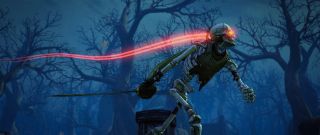
Pixel Boost is our weekly series devoted to the artistry of games, and the techniques required to run them at high resolutions. Gallery by James Snook.
Want to see the full size version of any of the images in this gallery? Click the "expand" icon at the top-right of an image to open it at the original 7K resolution. They make for excellent wallpapers.
Running Borderlands 2 and Borderlands: The Pre-Sequel at high resolutions
The art style in Borderlands 2 has always been a favorite of mine. The border shader is a nice touch, but the default thickness at native resolutions is a bit much. It can obscure some detail in far away objects, and getting it to look smooth and anti-aliased can be a challenge.
The primary benefit to downsampling Borderlands from high resolutions is that the outline shader becomes much thinner. This allows the game to look much more clean while still maintaining its art style. I do like the border shader and think that the game looks a bit flat without it, so I'll never go as far as to turn that off in the config files.
Here are two comparisons that show playing at native resolution and higher resolutions:
I used in-game FXAA to try and smooth the aliasing a bit, but you can see how that makes the 1920x1080 shots a little blurry. At 7K, FXAA is more accurate and therefore mostly affects edges and without affecting texture fidelity, allowing the game to look sharper.
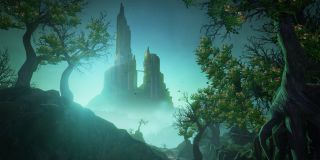
Pixel Boost is our weekly series devoted to the artistry of games, and the techniques required to run them at high resolutions. Gallery by James Snook.
Want to see the full size version of any of the images in this gallery? Click the "expand" icon at the top-right of an image to open it at the original 7K resolution. They make for excellent wallpapers.
Running Borderlands 2 and Borderlands: The Pre-Sequel at high resolutions
The art style in Borderlands 2 has always been a favorite of mine. The border shader is a nice touch, but the default thickness at native resolutions is a bit much. It can obscure some detail in far away objects, and getting it to look smooth and anti-aliased can be a challenge.
The primary benefit to downsampling Borderlands from high resolutions is that the outline shader becomes much thinner. This allows the game to look much more clean while still maintaining its art style. I do like the border shader and think that the game looks a bit flat without it, so I'll never go as far as to turn that off in the config files.
Here are two comparisons that show playing at native resolution and higher resolutions:
I used in-game FXAA to try and smooth the aliasing a bit, but you can see how that makes the 1920x1080 shots a little blurry. At 7K, FXAA is more accurate and therefore mostly affects edges and without affecting texture fidelity, allowing the game to look sharper.
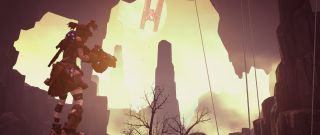
Pixel Boost is our weekly series devoted to the artistry of games, and the techniques required to run them at high resolutions. Gallery by James Snook.
Want to see the full size version of any of the images in this gallery? Click the "expand" icon at the top-right of an image to open it at the original 7K resolution. They make for excellent wallpapers.
Running Borderlands 2 and Borderlands: The Pre-Sequel at high resolutions
The art style in Borderlands 2 has always been a favorite of mine. The border shader is a nice touch, but the default thickness at native resolutions is a bit much. It can obscure some detail in far away objects, and getting it to look smooth and anti-aliased can be a challenge.
The primary benefit to downsampling Borderlands from high resolutions is that the outline shader becomes much thinner. This allows the game to look much more clean while still maintaining its art style. I do like the border shader and think that the game looks a bit flat without it, so I'll never go as far as to turn that off in the config files.
Here are two comparisons that show playing at native resolution and higher resolutions:
I used in-game FXAA to try and smooth the aliasing a bit, but you can see how that makes the 1920x1080 shots a little blurry. At 7K, FXAA is more accurate and therefore mostly affects edges and without affecting texture fidelity, allowing the game to look sharper.
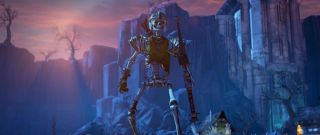
Pixel Boost is our weekly series devoted to the artistry of games, and the techniques required to run them at high resolutions. Gallery by James Snook.
Want to see the full size version of any of the images in this gallery? Click the "expand" icon at the top-right of an image to open it at the original 7K resolution. They make for excellent wallpapers.
Running Borderlands 2 and Borderlands: The Pre-Sequel at high resolutions
The art style in Borderlands 2 has always been a favorite of mine. The border shader is a nice touch, but the default thickness at native resolutions is a bit much. It can obscure some detail in far away objects, and getting it to look smooth and anti-aliased can be a challenge.
The primary benefit to downsampling Borderlands from high resolutions is that the outline shader becomes much thinner. This allows the game to look much more clean while still maintaining its art style. I do like the border shader and think that the game looks a bit flat without it, so I'll never go as far as to turn that off in the config files.
Here are two comparisons that show playing at native resolution and higher resolutions:
I used in-game FXAA to try and smooth the aliasing a bit, but you can see how that makes the 1920x1080 shots a little blurry. At 7K, FXAA is more accurate and therefore mostly affects edges and without affecting texture fidelity, allowing the game to look sharper.
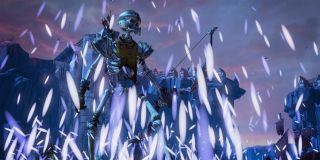
Pixel Boost is our weekly series devoted to the artistry of games, and the techniques required to run them at high resolutions. Gallery by James Snook.
Want to see the full size version of any of the images in this gallery? Click the "expand" icon at the top-right of an image to open it at the original 7K resolution. They make for excellent wallpapers.
Running Borderlands 2 and Borderlands: The Pre-Sequel at high resolutions
The art style in Borderlands 2 has always been a favorite of mine. The border shader is a nice touch, but the default thickness at native resolutions is a bit much. It can obscure some detail in far away objects, and getting it to look smooth and anti-aliased can be a challenge.
The primary benefit to downsampling Borderlands from high resolutions is that the outline shader becomes much thinner. This allows the game to look much more clean while still maintaining its art style. I do like the border shader and think that the game looks a bit flat without it, so I'll never go as far as to turn that off in the config files.
Here are two comparisons that show playing at native resolution and higher resolutions:
I used in-game FXAA to try and smooth the aliasing a bit, but you can see how that makes the 1920x1080 shots a little blurry. At 7K, FXAA is more accurate and therefore mostly affects edges and without affecting texture fidelity, allowing the game to look sharper.
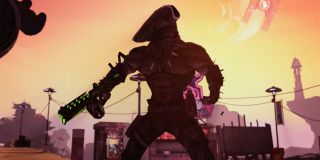
Pixel Boost is our weekly series devoted to the artistry of games, and the techniques required to run them at high resolutions. Gallery by James Snook.
Want to see the full size version of any of the images in this gallery? Click the "expand" icon at the top-right of an image to open it at the original 7K resolution. They make for excellent wallpapers.
Running Borderlands 2 and Borderlands: The Pre-Sequel at high resolutions
The art style in Borderlands 2 has always been a favorite of mine. The border shader is a nice touch, but the default thickness at native resolutions is a bit much. It can obscure some detail in far away objects, and getting it to look smooth and anti-aliased can be a challenge.
The primary benefit to downsampling Borderlands from high resolutions is that the outline shader becomes much thinner. This allows the game to look much more clean while still maintaining its art style. I do like the border shader and think that the game looks a bit flat without it, so I'll never go as far as to turn that off in the config files.
Here are two comparisons that show playing at native resolution and higher resolutions:
I used in-game FXAA to try and smooth the aliasing a bit, but you can see how that makes the 1920x1080 shots a little blurry. At 7K, FXAA is more accurate and therefore mostly affects edges and without affecting texture fidelity, allowing the game to look sharper.

Pixel Boost is our weekly series devoted to the artistry of games, and the techniques required to run them at high resolutions. Gallery by James Snook.
Want to see the full size version of any of the images in this gallery? Click the "expand" icon at the top-right of an image to open it at the original 7K resolution. They make for excellent wallpapers.
Running Borderlands 2 and Borderlands: The Pre-Sequel at high resolutions
The art style in Borderlands 2 has always been a favorite of mine. The border shader is a nice touch, but the default thickness at native resolutions is a bit much. It can obscure some detail in far away objects, and getting it to look smooth and anti-aliased can be a challenge.
The primary benefit to downsampling Borderlands from high resolutions is that the outline shader becomes much thinner. This allows the game to look much more clean while still maintaining its art style. I do like the border shader and think that the game looks a bit flat without it, so I'll never go as far as to turn that off in the config files.
Here are two comparisons that show playing at native resolution and higher resolutions:
I used in-game FXAA to try and smooth the aliasing a bit, but you can see how that makes the 1920x1080 shots a little blurry. At 7K, FXAA is more accurate and therefore mostly affects edges and without affecting texture fidelity, allowing the game to look sharper.
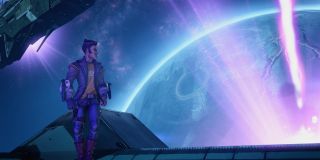
Pixel Boost is our weekly series devoted to the artistry of games, and the techniques required to run them at high resolutions. Gallery by James Snook.
Want to see the full size version of any of the images in this gallery? Click the "expand" icon at the top-right of an image to open it at the original 7K resolution. They make for excellent wallpapers.
Running Borderlands 2 and Borderlands: The Pre-Sequel at high resolutions
The art style in Borderlands 2 has always been a favorite of mine. The border shader is a nice touch, but the default thickness at native resolutions is a bit much. It can obscure some detail in far away objects, and getting it to look smooth and anti-aliased can be a challenge.
The primary benefit to downsampling Borderlands from high resolutions is that the outline shader becomes much thinner. This allows the game to look much more clean while still maintaining its art style. I do like the border shader and think that the game looks a bit flat without it, so I'll never go as far as to turn that off in the config files.
Here are two comparisons that show playing at native resolution and higher resolutions:
I used in-game FXAA to try and smooth the aliasing a bit, but you can see how that makes the 1920x1080 shots a little blurry. At 7K, FXAA is more accurate and therefore mostly affects edges and without affecting texture fidelity, allowing the game to look sharper.

Pixel Boost is our weekly series devoted to the artistry of games, and the techniques required to run them at high resolutions. Gallery by James Snook.
Want to see the full size version of any of the images in this gallery? Click the "expand" icon at the top-right of an image to open it at the original 7K resolution. They make for excellent wallpapers.
Running Borderlands 2 and Borderlands: The Pre-Sequel at high resolutions
The art style in Borderlands 2 has always been a favorite of mine. The border shader is a nice touch, but the default thickness at native resolutions is a bit much. It can obscure some detail in far away objects, and getting it to look smooth and anti-aliased can be a challenge.
The primary benefit to downsampling Borderlands from high resolutions is that the outline shader becomes much thinner. This allows the game to look much more clean while still maintaining its art style. I do like the border shader and think that the game looks a bit flat without it, so I'll never go as far as to turn that off in the config files.
Here are two comparisons that show playing at native resolution and higher resolutions:
I used in-game FXAA to try and smooth the aliasing a bit, but you can see how that makes the 1920x1080 shots a little blurry. At 7K, FXAA is more accurate and therefore mostly affects edges and without affecting texture fidelity, allowing the game to look sharper.

Pixel Boost is our weekly series devoted to the artistry of games, and the techniques required to run them at high resolutions. Gallery by James Snook.
Want to see the full size version of any of the images in this gallery? Click the "expand" icon at the top-right of an image to open it at the original 7K resolution. They make for excellent wallpapers.
Running Borderlands 2 and Borderlands: The Pre-Sequel at high resolutions
The art style in Borderlands 2 has always been a favorite of mine. The border shader is a nice touch, but the default thickness at native resolutions is a bit much. It can obscure some detail in far away objects, and getting it to look smooth and anti-aliased can be a challenge.
The primary benefit to downsampling Borderlands from high resolutions is that the outline shader becomes much thinner. This allows the game to look much more clean while still maintaining its art style. I do like the border shader and think that the game looks a bit flat without it, so I'll never go as far as to turn that off in the config files.
Here are two comparisons that show playing at native resolution and higher resolutions:
I used in-game FXAA to try and smooth the aliasing a bit, but you can see how that makes the 1920x1080 shots a little blurry. At 7K, FXAA is more accurate and therefore mostly affects edges and without affecting texture fidelity, allowing the game to look sharper.

Pixel Boost is our weekly series devoted to the artistry of games, and the techniques required to run them at high resolutions. Gallery by James Snook.
Want to see the full size version of any of the images in this gallery? Click the "expand" icon at the top-right of an image to open it at the original 7K resolution. They make for excellent wallpapers.
Running Borderlands 2 and Borderlands: The Pre-Sequel at high resolutions
The art style in Borderlands 2 has always been a favorite of mine. The border shader is a nice touch, but the default thickness at native resolutions is a bit much. It can obscure some detail in far away objects, and getting it to look smooth and anti-aliased can be a challenge.
The primary benefit to downsampling Borderlands from high resolutions is that the outline shader becomes much thinner. This allows the game to look much more clean while still maintaining its art style. I do like the border shader and think that the game looks a bit flat without it, so I'll never go as far as to turn that off in the config files.
Here are two comparisons that show playing at native resolution and higher resolutions:
I used in-game FXAA to try and smooth the aliasing a bit, but you can see how that makes the 1920x1080 shots a little blurry. At 7K, FXAA is more accurate and therefore mostly affects edges and without affecting texture fidelity, allowing the game to look sharper.
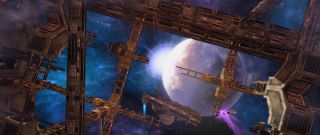
Pixel Boost is our weekly series devoted to the artistry of games, and the techniques required to run them at high resolutions. Gallery by James Snook.
Want to see the full size version of any of the images in this gallery? Click the "expand" icon at the top-right of an image to open it at the original 7K resolution. They make for excellent wallpapers.
Running Borderlands 2 and Borderlands: The Pre-Sequel at high resolutions
The art style in Borderlands 2 has always been a favorite of mine. The border shader is a nice touch, but the default thickness at native resolutions is a bit much. It can obscure some detail in far away objects, and getting it to look smooth and anti-aliased can be a challenge.
The primary benefit to downsampling Borderlands from high resolutions is that the outline shader becomes much thinner. This allows the game to look much more clean while still maintaining its art style. I do like the border shader and think that the game looks a bit flat without it, so I'll never go as far as to turn that off in the config files.
Here are two comparisons that show playing at native resolution and higher resolutions:
I used in-game FXAA to try and smooth the aliasing a bit, but you can see how that makes the 1920x1080 shots a little blurry. At 7K, FXAA is more accurate and therefore mostly affects edges and without affecting texture fidelity, allowing the game to look sharper.

Pixel Boost is our weekly series devoted to the artistry of games, and the techniques required to run them at high resolutions. Gallery by James Snook.
Want to see the full size version of any of the images in this gallery? Click the "expand" icon at the top-right of an image to open it at the original 7K resolution. They make for excellent wallpapers.
Running Borderlands 2 and Borderlands: The Pre-Sequel at high resolutions
The art style in Borderlands 2 has always been a favorite of mine. The border shader is a nice touch, but the default thickness at native resolutions is a bit much. It can obscure some detail in far away objects, and getting it to look smooth and anti-aliased can be a challenge.
The primary benefit to downsampling Borderlands from high resolutions is that the outline shader becomes much thinner. This allows the game to look much more clean while still maintaining its art style. I do like the border shader and think that the game looks a bit flat without it, so I'll never go as far as to turn that off in the config files.
Here are two comparisons that show playing at native resolution and higher resolutions:
I used in-game FXAA to try and smooth the aliasing a bit, but you can see how that makes the 1920x1080 shots a little blurry. At 7K, FXAA is more accurate and therefore mostly affects edges and without affecting texture fidelity, allowing the game to look sharper.
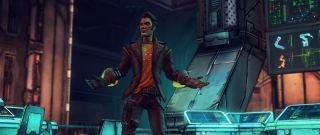
Pixel Boost is our weekly series devoted to the artistry of games, and the techniques required to run them at high resolutions. Gallery by James Snook.
Want to see the full size version of any of the images in this gallery? Click the "expand" icon at the top-right of an image to open it at the original 7K resolution. They make for excellent wallpapers.
Running Borderlands 2 and Borderlands: The Pre-Sequel at high resolutions
The art style in Borderlands 2 has always been a favorite of mine. The border shader is a nice touch, but the default thickness at native resolutions is a bit much. It can obscure some detail in far away objects, and getting it to look smooth and anti-aliased can be a challenge.
The primary benefit to downsampling Borderlands from high resolutions is that the outline shader becomes much thinner. This allows the game to look much more clean while still maintaining its art style. I do like the border shader and think that the game looks a bit flat without it, so I'll never go as far as to turn that off in the config files.
Here are two comparisons that show playing at native resolution and higher resolutions:
I used in-game FXAA to try and smooth the aliasing a bit, but you can see how that makes the 1920x1080 shots a little blurry. At 7K, FXAA is more accurate and therefore mostly affects edges and without affecting texture fidelity, allowing the game to look sharper.

Pixel Boost is our weekly series devoted to the artistry of games, and the techniques required to run them at high resolutions. Gallery by James Snook.
Want to see the full size version of any of the images in this gallery? Click the "expand" icon at the top-right of an image to open it at the original 7K resolution. They make for excellent wallpapers.
Running Borderlands 2 and Borderlands: The Pre-Sequel at high resolutions
The art style in Borderlands 2 has always been a favorite of mine. The border shader is a nice touch, but the default thickness at native resolutions is a bit much. It can obscure some detail in far away objects, and getting it to look smooth and anti-aliased can be a challenge.
The primary benefit to downsampling Borderlands from high resolutions is that the outline shader becomes much thinner. This allows the game to look much more clean while still maintaining its art style. I do like the border shader and think that the game looks a bit flat without it, so I'll never go as far as to turn that off in the config files.
Here are two comparisons that show playing at native resolution and higher resolutions:
I used in-game FXAA to try and smooth the aliasing a bit, but you can see how that makes the 1920x1080 shots a little blurry. At 7K, FXAA is more accurate and therefore mostly affects edges and without affecting texture fidelity, allowing the game to look sharper.
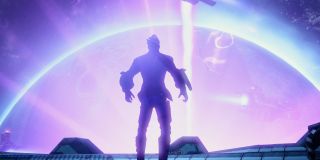
Pixel Boost is our weekly series devoted to the artistry of games, and the techniques required to run them at high resolutions. Gallery by James Snook.
Want to see the full size version of any of the images in this gallery? Click the "expand" icon at the top-right of an image to open it at the original 7K resolution. They make for excellent wallpapers.
Running Borderlands 2 and Borderlands: The Pre-Sequel at high resolutions
The art style in Borderlands 2 has always been a favorite of mine. The border shader is a nice touch, but the default thickness at native resolutions is a bit much. It can obscure some detail in far away objects, and getting it to look smooth and anti-aliased can be a challenge.
The primary benefit to downsampling Borderlands from high resolutions is that the outline shader becomes much thinner. This allows the game to look much more clean while still maintaining its art style. I do like the border shader and think that the game looks a bit flat without it, so I'll never go as far as to turn that off in the config files.
Here are two comparisons that show playing at native resolution and higher resolutions:
I used in-game FXAA to try and smooth the aliasing a bit, but you can see how that makes the 1920x1080 shots a little blurry. At 7K, FXAA is more accurate and therefore mostly affects edges and without affecting texture fidelity, allowing the game to look sharper.

Pixel Boost is our weekly series devoted to the artistry of games, and the techniques required to run them at high resolutions. Gallery by James Snook.
Want to see the full size version of any of the images in this gallery? Click the "expand" icon at the top-right of an image to open it at the original 7K resolution. They make for excellent wallpapers.
Running Borderlands 2 and Borderlands: The Pre-Sequel at high resolutions
The art style in Borderlands 2 has always been a favorite of mine. The border shader is a nice touch, but the default thickness at native resolutions is a bit much. It can obscure some detail in far away objects, and getting it to look smooth and anti-aliased can be a challenge.
The primary benefit to downsampling Borderlands from high resolutions is that the outline shader becomes much thinner. This allows the game to look much more clean while still maintaining its art style. I do like the border shader and think that the game looks a bit flat without it, so I'll never go as far as to turn that off in the config files.
Here are two comparisons that show playing at native resolution and higher resolutions:
I used in-game FXAA to try and smooth the aliasing a bit, but you can see how that makes the 1920x1080 shots a little blurry. At 7K, FXAA is more accurate and therefore mostly affects edges and without affecting texture fidelity, allowing the game to look sharper.
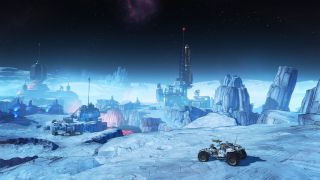
Pixel Boost is our weekly series devoted to the artistry of games, and the techniques required to run them at high resolutions. Gallery by James Snook.
Want to see the full size version of any of the images in this gallery? Click the "expand" icon at the top-right of an image to open it at the original 7K resolution. They make for excellent wallpapers.
Running Borderlands 2 and Borderlands: The Pre-Sequel at high resolutions
The art style in Borderlands 2 has always been a favorite of mine. The border shader is a nice touch, but the default thickness at native resolutions is a bit much. It can obscure some detail in far away objects, and getting it to look smooth and anti-aliased can be a challenge.
The primary benefit to downsampling Borderlands from high resolutions is that the outline shader becomes much thinner. This allows the game to look much more clean while still maintaining its art style. I do like the border shader and think that the game looks a bit flat without it, so I'll never go as far as to turn that off in the config files.
Here are two comparisons that show playing at native resolution and higher resolutions:
I used in-game FXAA to try and smooth the aliasing a bit, but you can see how that makes the 1920x1080 shots a little blurry. At 7K, FXAA is more accurate and therefore mostly affects edges and without affecting texture fidelity, allowing the game to look sharper.

PC Gamer is the global authority on PC games—starting in 1993 with the magazine, and then in 2010 with this website you're currently reading. We have writers across the US, Canada, UK and Australia, who you can read about here.
Most Popular

